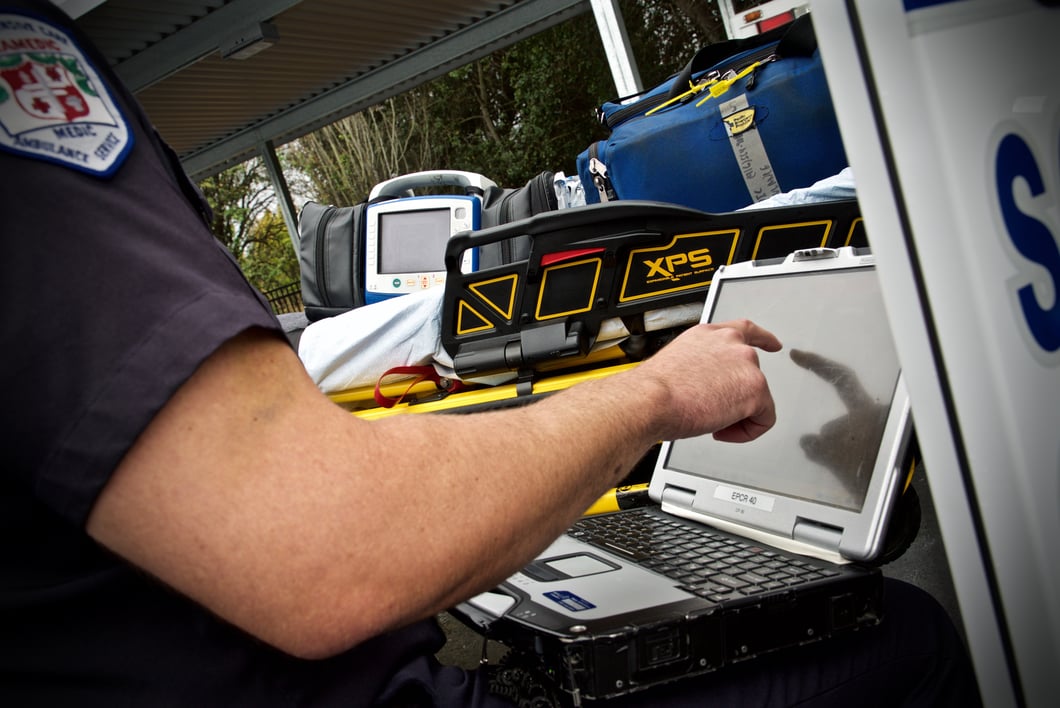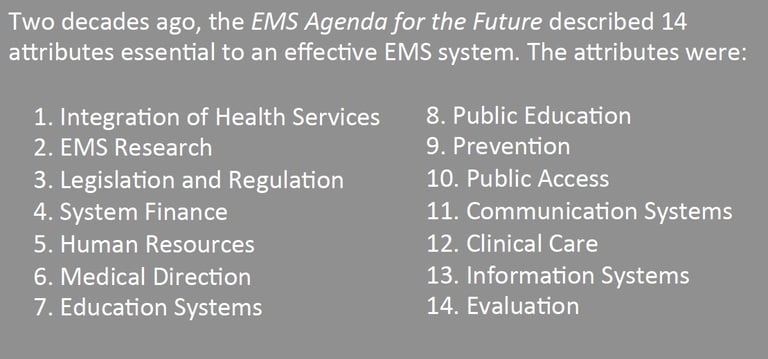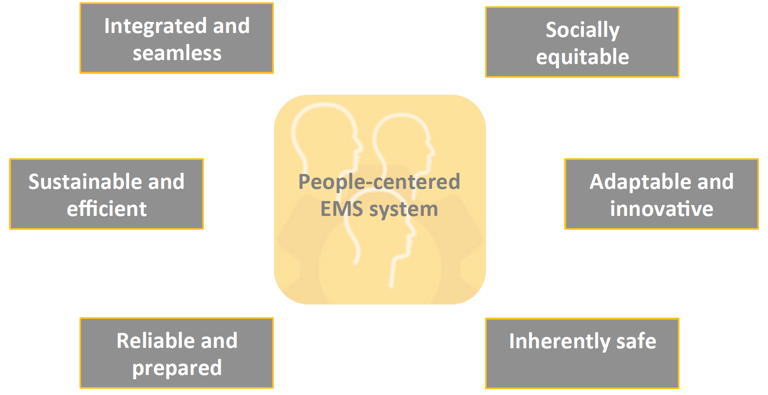EMS Integration: A Straw Man for the EMS Agenda 2050
In September, the EMS Agenda 2050 Team released a Straw Man Document to provide insight and generate discussion that will lead up to a formal EMS Agenda 2050 document in 2018
Was this information valuable?

In September, the EMS Agenda 2050 Team released a Straw Man Document to provide insight and generate discussion that will lead up to a formal EMS Agenda 2050 document in 2018. This month’s blog focus was to discuss the value and benefit of product integration. Integration being defined as how software, devices and communication tools create an opportunity for an improved provider and patient experience and empower Systems of Care. After reading the Straw Man Document, it became clear that through this one blog piece, we have an opportunity to provide an executive summary and use its content to drive home the vision and importance of integration.
Innovation in EMS: From Transport Service to Delivery of Clinical Care
In 1996, the EMS Agenda for the Future described a vision of an EMS system using 14 attributes. These attributes, or system components, built upon the original 1973 EMS Enactment legislation that formally established EMS as we know it today. The 1996 attributes were innovative as they moved EMS from a transport service approach to the delivery of clinical care. A few of the key attributes included the integration of health services, the inclusion of medical direction and the use of information systems.

A Focus on People-Centered EMS Systems
Although the Straw Man Document does offer some additional attributes to consider, the lens has been tilted for the EMS Agenda 2050. The focal point now provides a picture of what the ideal EMS system looks like. People-centered EMS systems will be:
- Integrated and seamless
- Social equitable
- Inherently safe
- Sustainable and efficient
- Reliable and prepared
- Adaptable and innovative
The term “people-centered” is used rather than patient-centered as the EMS system must meet the needs of patients, families, communities and care providers. Within this concept, people receive their care in the place that balances their needs, convenience, comfort and cost. There must be deep integration across the healthcare system so that all providers have access to electronic health records and decision support that updates in real-time.

Integrated and Seamless. EMS systems, along with all greater healthcare systems, will be fully integrated with each other and their associated communities. This will require a seamless level of communication and integration with medical devices and software coordination as patients navigate the healthcare system for prevention, primary care and emergent events.
Socially Equitable. EMS and the greater healthcare system will provide equitable services including access and quality of care regardless of age, gender, ethnicity or ability to pay. EMS providers will be trained and rely on integrated technology to care for all, regardless of age, language or disabilities.
Inherently Safe. The EMS system will have a focus on safety throughout the organization, minimizing injury, infections, illness and stress. Decisions, operational processes, software and technology will focus on the safety of patients, bystanders, the public and practitioners.
Sustainable and Efficient. EMS systems will have the resources they require to provide services and care in a fiscally-responsible, sustainable way. The will require business operations, software, decision support and technical innovation focused on efficiency, transparency and accountability.
Reliable and Prepared. EMS service delivery and care will be consistent, evidence-based and compassionate. EMS systems will be prepared for anything and scalable to manage day-to-day demands as well as the increased demand from planned and unplanned events.
Adaptable and Innovative. EMS will be a component of an adaptable healthcare system. EMS will employ technology, creative system designs, educational programs and other ongoing innovation to best meet the needs and desires of the people and community.
Be a Part of the Process to Determine the Future of EMS
“In people-centered EMS systems, processes, protocols, technology, policies and practices, are designed to provide the best possible outcome for individuals and communities, day‐to-day and during disasters. EMS is a versatile, mobile, community healthcare resource. It serves as the front line of the healthcare system and plays a core role in supporting the well-being of members of the community through data-driven, population-oriented, evidence-based, and safe approaches to prevention, response and clinical care. EMS organizations collaborate with their community partners and have access to the resources they need, including up-to-date technology and a highly trained, healthy workforce.” – Straw Man Document
Remember, the Straw Man Document is only the beginning of the discussion on integration. I would encourage everyone to participate in this future vision of EMS. Over the next months, the EMS Agenda 2050 Team will be holding public meetings across the country seeking your input. Please go to EMSAgenda2050.org for additional information.
Related Posts
ZOLL Pulse Blog
Subscribe to our blog and receive quality content that makes your job as an EMS & fire, hospital, or AR professional easier.
ZOLL Pulse Blog
Subscribe to our blog and receive quality content that makes your job as an EMS, fire, hospital, or AR professional easier.




